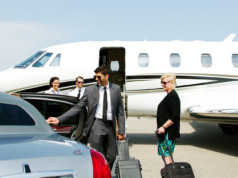
Aviation departments often operate with a lean staff, so when an employee retires, is terminated, or leaves, there may be a rush to fill that position. To avoid the most common hiring mistakes — which can be costly not only in financial terms, but also in loss of productively and morale
It’s More Than Skills and Experience
Aviation departments often operate with a lean staff, so when an employee retires, is terminated, or leaves, there may be a rush to fill that position. To avoid the most common hiring mistakes — which can be costly not only in financial terms, but also in loss of productively and morale — follow these best practices:
Take Your Time — Finding the best match for your flight department is not likely to be quick or easy. The cost to replace a “bad hire” can be as much as five times their annual salary, according to the Society for Human Resources Management, so allowing sufficient time for the search will help ensure that you get it right the first time.
Understand the Nature of the Job You Are Advertising — Your chief pilot, for example, does a lot more than fly. He or she will, among other duties, supervise and arrange to train the flight crew, create and operate within your defined budget, approve invoices, advise you on new purchases, choose the FBO for each flight, administer flight and maintenance records, oversee travel security, arrange for domestic and international permits, and much more.
Write a Clearly Defined Job Description — In addition to technical duties, a key selection criterion of any aviation hire is whether the candidate can maintain and protect the value of the company’s assets. In writing the job description, focus on the value an individual can bring to your company. Your maintenance technician may save you more yearly by carefully shopping major inspections than your pilot saves on managing fuel flow.
Do Not Rely Solely On Internet Recruiting — This practice often results in responses from those who are either unemployed or dissatisfied, not those who are happy and successful in their current role. It’s imperative that your team create a solid recruiting process with HR, use current industry best practices, and consider relying on outside help from a recruiter experienced in analyzing a candidate’s professional background.
Have Reasonable Expectations of Your Current Staff — Do not expect your pilot to also be an expert recruiter, nor your internal recruiters to understand the technical nature of the open position.
Seek Out a Culture Match — Candidates who share your company’s passion, vision, and culture will merge easily with your current staff. Even if the candidate has come from the flight department of a highly regarded company, or was referred by a friend, that does not ensure that he or she will be a good match for your company.
Carefully Vet All Applications — In an August 2014 survey, Careerbuilder.com noted that 58 percent of employers have caught a lie on a resume, which only makes one wonder: how many were not caught? Allow sufficient time to investigate a candidate’s background and experience, and always check references. As the old saying goes, “4000 hours of flight time can be one hour repeated 4000 times.” That’s not the kind of varied and challenging flight experience required to fly trans- or intercontinental flight legs. Consider outsourcing psychological testing and background checks for all candidates: your life may depend on it.
Rely On Your Instincts — A candidate who does not “show well,” or who presents a sloppy résumé full of grammatical errors or misspellings, is not likely to be someone you would trust to handle your aviation investment — or your safety. That’s why the in-person interview is such a critical part of the hiring process. It’s where your instincts intersect with your knowledge of the job and your company. And it is a cross-check on whether the candidate’s background, education, experience, and attitude are a match with your existing flight department personnel.
Following these simple, common sense steps to recruiting will help ensure that your future aviation hires are “good hires” — even great ones. BAA
Sheryl Barden, BS, MBA, is CEO of Aviation Personnel International, where she helps business aviation and HR teams select great hires with the same values, passion and safety focus as their potential employer.




